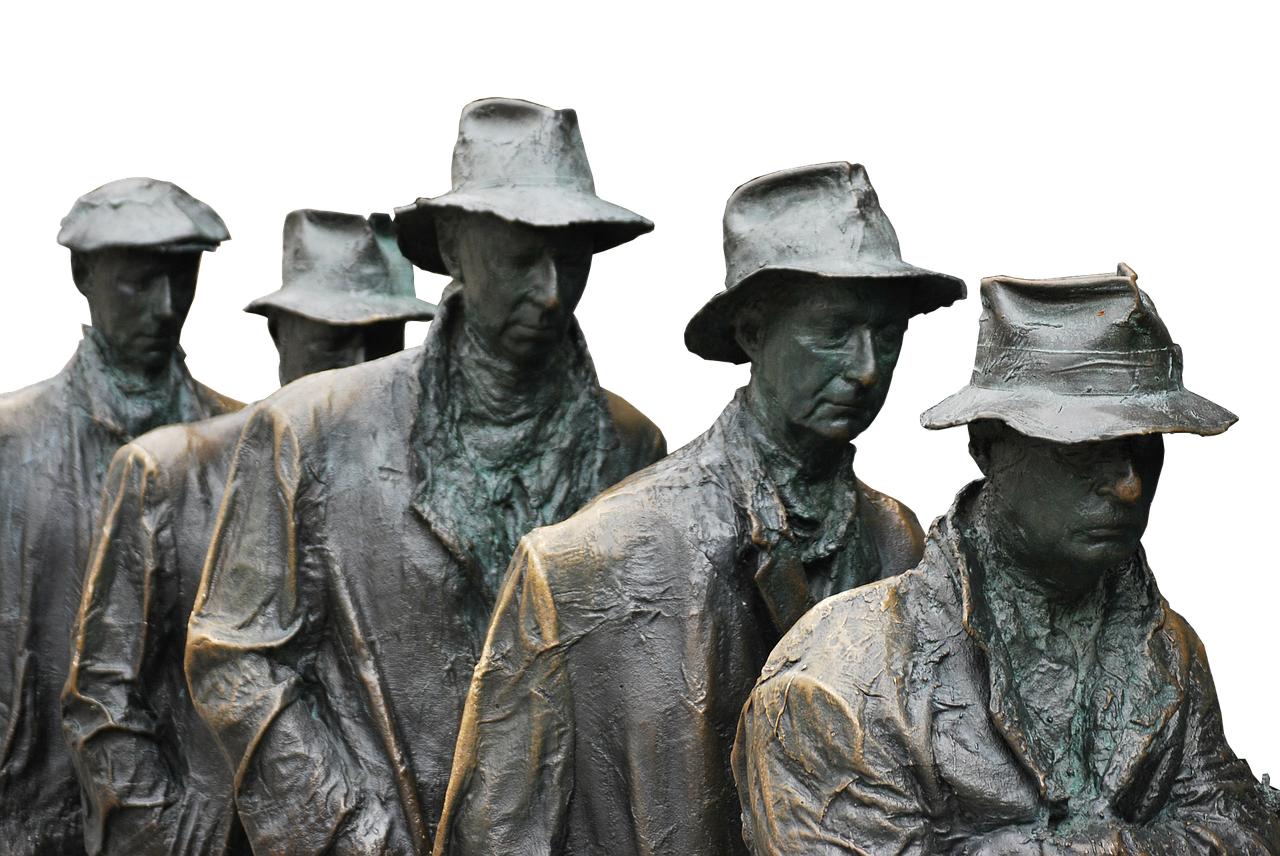

Summary
• We summarise three new NBER working papers by a former Bank of England MPC member and a UCL professor.
• All three emphasise the importance of using consumer and business surveys when predicting unemployment and recessions.
• In a bold claim, the authors believe the US has entered a recession as of Autumn 2021 based on changes in the latest Michigan Index of Consumer Confidence.
Introduction
Traditional methods and data are generally poor at predicting downturns. Their low frequency and constant revisions make it difficult for economists to get accurate real-time information on economic activity. Instead, policymakers and forecasters have long used more timely, higher-frequency data, such as survey-based indicators (e.g., PMIs) and labour market indicators (e.g., the Sahm Rule). More recently, new methods have unlocked alternative indicators, from geolocation data (e.g., mobility) to textual analysis (e.g., Google trends).
This article is only available to Macro Hive subscribers. Sign-up to receive world-class macro analysis with a daily curated newsletter, podcast, original content from award-winning researchers, cross market strategy, equity insights, trade ideas, crypto flow frameworks, academic paper summaries, explanation and analysis of market-moving events, community investor chat room, and more.
Summary
- We summarise three new NBER working papers by a former Bank of England MPC member and a UCL professor.
- All three emphasise the importance of using consumer and business surveys when predicting unemployment and recessions.
- In a bold claim, the authors believe the US has entered a recession as of Autumn 2021 based on changes in the latest Michigan Index of Consumer Confidence.
Introduction
Traditional methods and data are generally poor at predicting downturns. Their low frequency and constant revisions make it difficult for economists to get accurate real-time information on economic activity. Instead, policymakers and forecasters have long used more timely, higher-frequency data, such as survey-based indicators (e.g., PMIs) and labour market indicators (e.g., the Sahm Rule). More recently, new methods have unlocked alternative indicators, from geolocation data (e.g., mobility) to textual analysis (e.g., Google trends).
A new NBER working paper has gained much attention in the media recently for suggesting the US has entered a recession. The signal comes from downward movements in consumer expectations, which the authors find have previously been able to predict economic downturns well in advance.
Consumer expectations are important because ‘the wisdom of crowds’ often produces more accurate assessments of situations than those offered by experts. In a bold claim, the authors say that a layperson’s opinion on the state of the economy is far better at predicting recessions than the entirety of the macroeconomic profession.
In all, former MPC member David Blanchflower and UCL professor Alex Bryson have authored three papers in 2021 on predicting recessions. In the first, they show how individuals’ fear of unemployment, their perceptions of the economic situation and their own financial situation can accurately predict changes in unemployment 12 months in advance. In the second, they pit employment PMIs and similar surveys against the Sahm rule, highlighting how qualitative surveys were far better at predicting the 2008 GFC. Their final and most popular paper includes their 2021 US recession claim. I focus on this one.
The Wellbeing of the Man or Woman on the Mile End Omnibus
At the core of all three papers are qualitative consumer surveys. The remarkable ability of these surveys to predict changes in macroeconomic activity is why the authors titled their recent webinar on the topic ‘The Wellbeing of the Man or Woman on the Mile End Omnibus’. Caring about the thoughts of this ordinary man or woman will give more insights into the state of the economy than any quantitative data. Here is why.
First, unlike most macroeconomic data, consumer survey data is unrevised, making inferences much more dependable. Second, the results are timely. Data released at month-end captures the thoughts of people during that month. Lastly, consumers and businesses have been shown to think the same. Consumer and business surveys, employment PMIs and recruitment difficulty indices all tend to move together (Chart 1).

Consumer survey data is also very robust. The predictions they provide hold for most consumer surveys worldwide. As we show next, the authors apply their findings to the US, EU and other OECD countries. For the US and EU, the Joint EU Harmonized Programme of Business and Consumer Surveys has similar predictive power to, for example, the University of Michigan Consumer Expectations Index.
Predicting Unemployment
Unemployment changes are notoriously difficult to predict. But with analysts looking more towards the labour market for higher-frequency predictors of recessions (e.g., job vacancies), and with unemployment tending to move closely with GDP, modelling unemployment is important. As they argue in their first paper of 2021, though, Blanchflower and Bryson find no credible predictor of unemployment other than lagged homeownership. This is because developments in the housing market reflect mobility frictions in labour markets.
That said, an early warning system exists. The Joint EU Harmonized Programme of Business and Consumer Surveys conducted by the European Commission asks individuals and employers about economic prospects. And the fear of unemployment (calculated from answers to the question, How do you expect the number of people unemployed in this country to change over the next 12 months?) accurately predicts changes in unemployment 12 months in advance (Chart 2). Business sentiment is also predictive of unemployment 12 months later.

In the UK, the Bank of England Agents’ (BOEA) scores of recruitment difficulties and employment intentions is also a good predictor. The employment indices in the three Markit PMIs are too. In the US, the Sahm rule predicts recessions but is equivalent to looking for two successive months of negative growth in either non-farm payrolls (NFP) or CPS employment. The NFP data probably gives an earlier indication of downturns than the Sahm rule. However, neither beat the predictive power of the Michigan Index of Consumer Confidence.
Defining a Recession
Traditionally, two or more successive quarters of negative growth amount to a ‘recession’. However, not all official bodies subscribe to this definition. In the US, the NBER Business Cycle Dating Committee requires a recession to involve ‘a significant decline in economic activity that is spread across the economy and lasts more than a few months’. This means that a recession can be shorter than two full quarters (e.g., Covid-19) or have two non-successive quarters of negative growth (e.g., 2001).
And so, the NBER identifies six US recessions since 1980. These are Q2 1980 to Q3 1980, Q4 1981 to Q1 1982, Q4 1990 to Q1 1991, Q1 2001 to Q3 2001, Q3 2008 to Q2 2009, and Q1 2020 to Q2 2020. Each took the NBER 5-12 months to call. For example, it took the NBER a year, until December 2008, to call the start of the Great Recession as December 2007. The authors argue it was possible to predict all the recessions at least one year ahead of the NBER.
Predicting a US Recession
Armed with these dates and the information on predicting unemployment changes, how can researchers identify a US recession before the NBER does? To guarantee spotting one, you will need all four of the following:
- Two of three successive quarters of negative quarterly GDP growth,
- Two successive months of employment declines in the CPS or NFP,
- The unemployment rate rising 0.3pp in a single month, and
- Either or both the Conference Board or University of Michigan Expectations Index values falling by 10 points or more.
While these criteria will give you a recession, the first is hardly ground-breaking and still suffers from revisions. The second two will do a good job of identifying a recession and will even start to change before growth turns negative. But the fourth is the real value-added. The authors show consumer expectations can predict downturns up to 18 months before the NBER.
Take the University of Michigan Expectations Index. Its Index of Consumer Sentiment is derived from five questions. Regressing the index with lags of 6-18 months on unemployment shows a negative and significant relationship between the two. We can also see this graphically (Chart 3). To predict a recession, the authors recommend looking for at least a 20-point fall in consumer confidence indexes.

Is the US in a Recession?
Previously, you needed declines in employment and upticks in the unemployment rate to call a recession. However, US involvement in propping up the labour market has, according to the authors, meant the wages and the unemployment rate are meaningless and the wage curve is wrong. Instead, they look only for that magic 20-point-plus reduction in consumer confidence indices. And they find it.
Both US consumer expectation surveys have experienced a large decline. The Conference Board survey peaked in March 2021 and has fallen 26 points since. The survey index has three components: business conditions, employment and income ‘six months hence’. Expectations of ‘better’ business conditions peaked in March 2021, as did expectations of ‘more jobs’. Both have declined steeply since. The Michigan survey has also, peaking in June 2021 but falling 18 points by August. By US states, California, Florida, Illinois, New York, Ohio and Pennsylvania have all experienced 20-point-plus drops from their peaks.
US PMIs tell a similar story. Consumer-facing sectors slowed markedly from May 2021. The monthly future PMI (which asks, What is the expected volume of business in 12 months – higher, the same or lower?) has also fallen sharply since June. New order PMIs for consumer goods, consumer services, technology and financial services have also declined considerably since May. Part of the decline, the authors argue, concerns anxiety among workers returning to work and anxiety among households, which has been rising since June in the US Census Bureau’s Household Pulse Survey.
Elsewhere in the US, the flash Composite PMI for September grew ‘at the slowest pace for a year’. The flash manufacturing PMI grew the slowest in five months. And the flash Composite Services PMI was the slowest rise in new business for 13 months.
Is There Cause for Concern Elsewhere?
Yes. Globally, Australia’s HIS Markit Services PMI contracted for a third straight month in September 2021. The UK’s Institute of Directors (IOD) reported that confidence ‘fell off a cliff’ in September. The HIS Markit flash Eurozone PMI grew at ‘a markedly reduced rate’ in September. And the German flash Composite PMI slowed in September.
Bottom Line
May and June of this year saw much discussion around changes in the second derivative of growth. At the same time, we were seeing significant drops from the peaks in consumer confidence. Those peaks were little higher (if at all) than before previous recessions. And the falls since are only found during past recessions. So, Blanchflower and Bryson argue, as of Autumn 2021, the US has entered a recession. If true, I expect the labour market should show signs of slowing too. We wait and see. But the NBER could well call a recession in 2022.
Citation
Blanchflower, D. and Bryson, A. (2021a) ‘The economics of walking about and predicting unemployment’, NBER working paper 29172
Blanchflower, D. and Bryson, A. (2021b) ‘The Sahm rule and predicting the Great Recession across OECD countries’, NBER working paper 29300
Blanchflower, D. and Bryson, A. (2021c) ‘The economics of walking about and predicting US downturns’, NBER working paper 29372
Sam van de Schootbrugge is a Macro Research Analyst at Macro Hive, currently completing his PhD in international finance. He has a master’s degree in economic research from the University of Cambridge and has worked in research roles for over 3 years in both the public and private sector.
